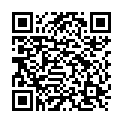|
|
|
| Module code: ABBG61 |
|
|
- |
|
5 |
| Semester: 3 |
| Mandatory course: yes |
Language of instruction:
German |
Assessment:
Checkflug 90 minutes
[updated 01.10.2020]
|
Exam recurrence:
The information regarding exam recurrence is found within the exam policy of the study programme (ASPO).
|
ABBG61 (P410-0047) Aviation Business (Basic), Bachelor, ASPO 01.10.2015
, semester 2, mandatory course
ABBG61 (P410-0047) Aviation Business (Basic), Bachelor, ASPO 01.10.2018
, semester 3, mandatory course
|
|
The total student study time for this course is 150 hours.
|
Recommended prerequisites (modules):
None.
|
Recommended as prerequisite for:
ABBG410 Meteorology II
ABBG47 General Aircraft Knowledge II & Priciples of Flight II
ABBG48 Performance and Flight Planning II & Navigation II
ABBG49 Human Performance II & Communication II
ABBG62 Visual Flight Training II
ABBG64 Multi-Crew Cooperation
[updated 11.02.2020]
|
Module coordinator:
Studienleitung |
Lecturer: Studienleitung
[updated 01.10.2018]
|
Learning outcomes:
The students will acquire the following competencies during the first phase of ATPL flight training:
- Application of aviation knowledge
- Aircraft control
- Knowledge of/adherence to procedures
- Radio communication
- Risk, task and workload management
- Situational awareness
- Aeronautical decision making and problem solving
[updated 01.10.2020]
|
Module content:
Visual Flight Training Part 1
Phase 1 (RWL)
Exercises up to the first solo flight comprise dual flight instruction on a single-engine airplane including:
- pre-flight operations, mass and balance determination, airplane inspection and servicing
- aerodrome and traffic pattern operations, collision avoidance and precautions
- control of the airplane by external visual references
- normal take-off and landings
- flight at critically slow airspeeds, recognition of and recovery from incipient and full stalls, spin avoidance
- unusual attitudes and simulated engine failure
Phase 2 (RWL)
Exercises up to the first solo cross-country flight comprise dual flight instruction and solo flights including:
- maximum performance (short field and obstacle clearance) take-off, short-field landings
- flight by reference solely to instruments, including the completion of a 180° turn
- dual cross-country flying using external visual references, dead-reckoning and radio navigation aids,
diversion procedures
- aerodrome and traffic pattern operations at different aerodromes
- crosswind take-off and landings
- abnormal and emergency procedures and manoeuvres, including simulated airplane equipment malfunctions
- operations to, from and transiting to controlled aerodromes, compliance with air traffic service procedures,
radio telephony procedures and phraseology
- knowledge of meteorological briefing arrangements, evaluation of weather conditions for flight and use of
Aeronautical Information Services (AIS).
Phase 3 (RWL)
Exercises up to the PPL(A) skill test level comprise dual instruction and flight instruction as SPIC. The dual instruction and testing comprises:
- repetition of exercises from phases 1 and 2
- VFR flight at relatively critical high airspeeds, recognition of and recovery from spiral dives
[updated 01.10.2020]
|
Teaching methods/Media:
Class briefings, lesson plans, flight preparation, pre-flight briefings, flight lessons, post-flight briefing, self-study according to lesson plans and homework assignments, single-engine airplane, white board, flip chart, iTunes U, iPad or MacBook, PC-MET Software,
[updated 01.10.2020]
|
Recommended or required reading:
- Training Manual Part A Chapter 2, RWL German Flight Academy 2015
- Training Manual Part B Chapter 1 through 6, RWL German Flight Academy 2013
- Operations Manual Part A through C, RWL German Flight Academy 2013
- POH AT-01 Aquila , Aquila Aviation GmbH (latest version)
- AIP VFR
- Bottlang Airfield Manual, Jeppesen Sanderson Inc. (latest version)
[updated 01.10.2020]
|


